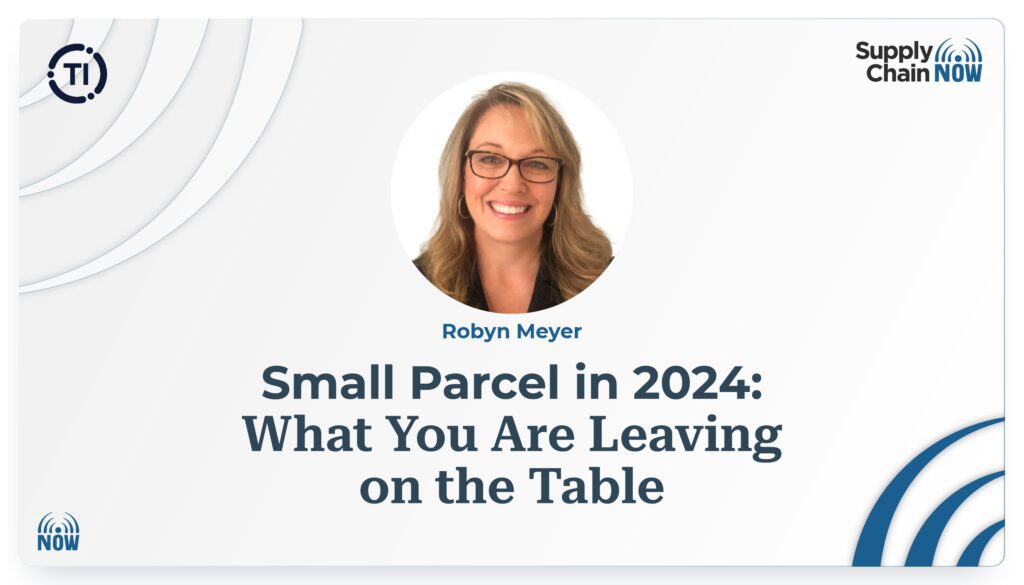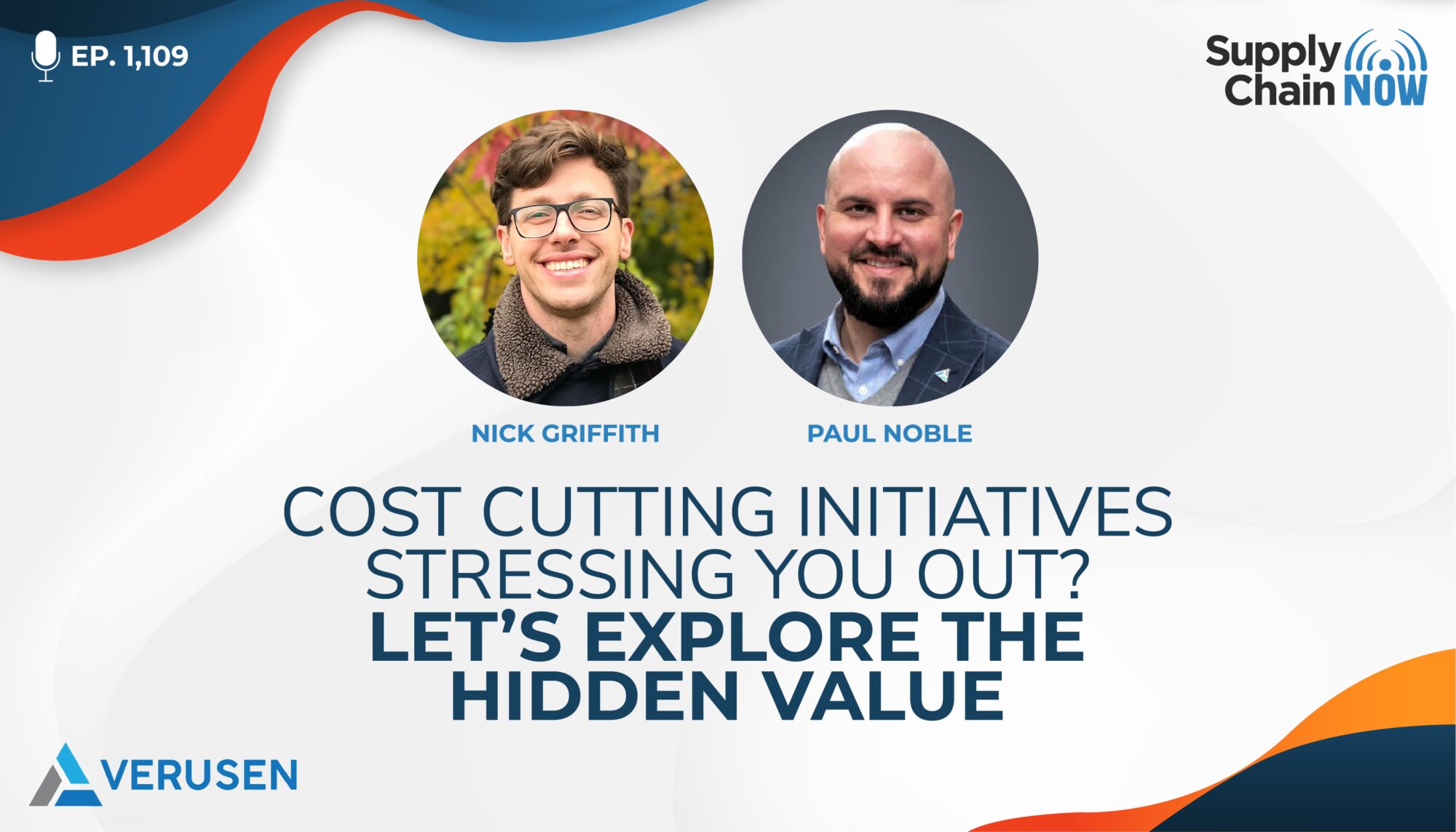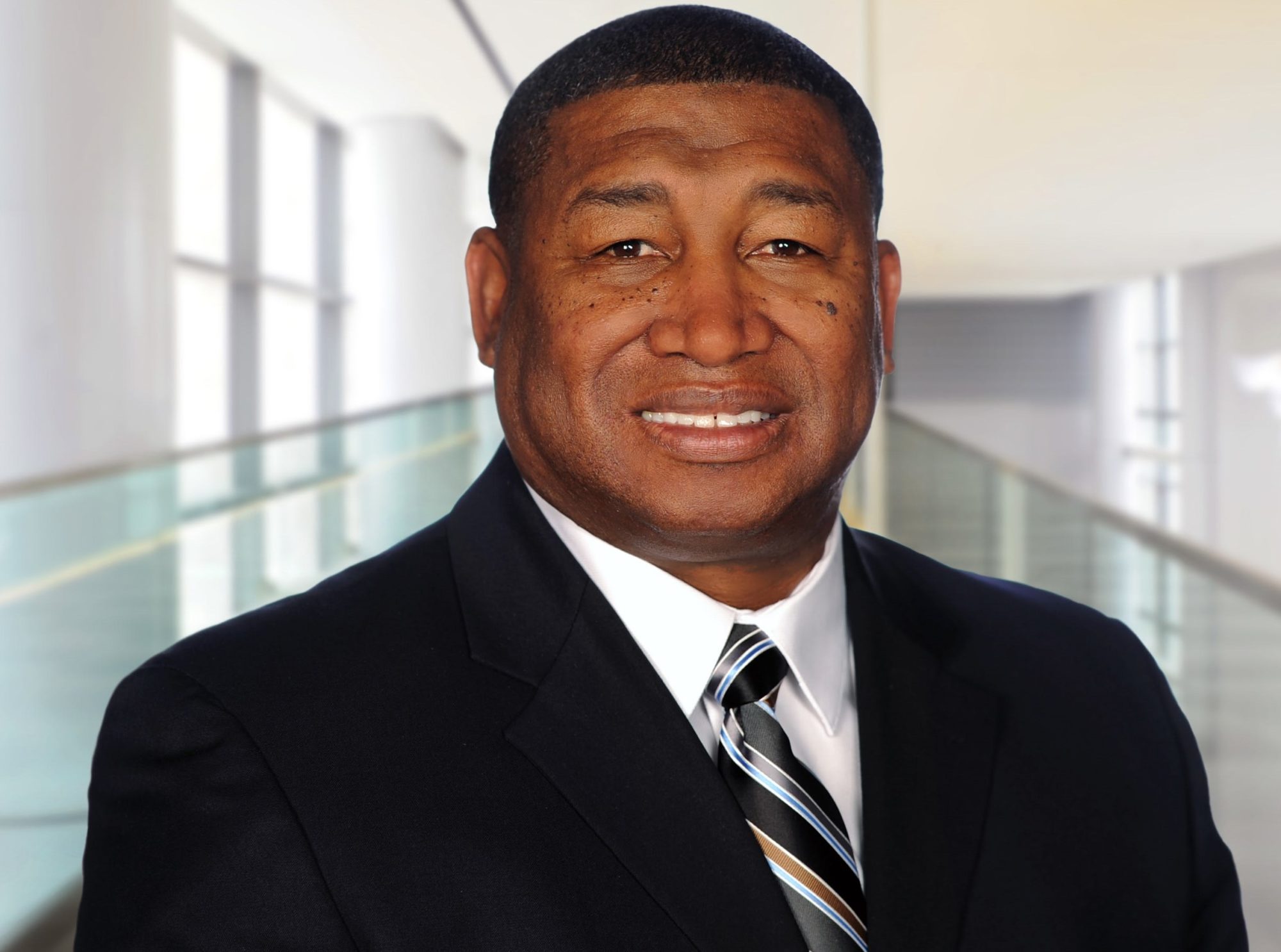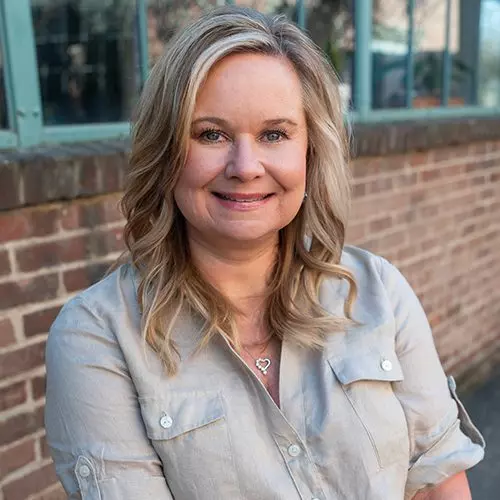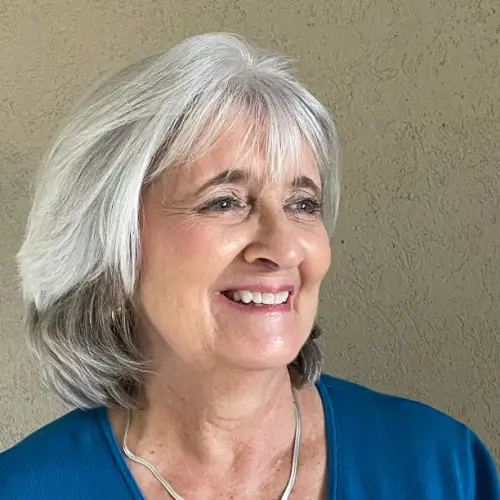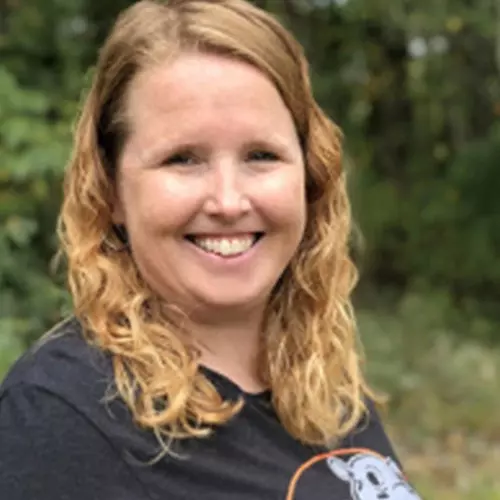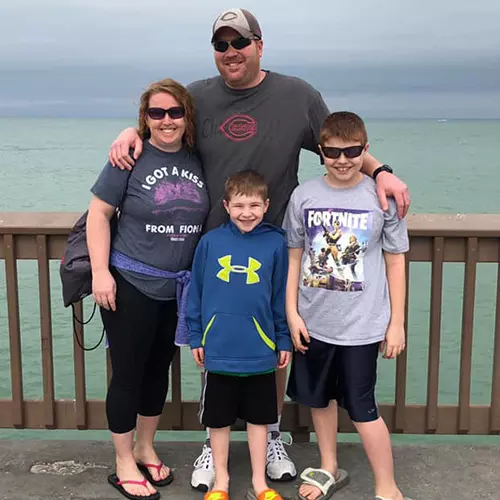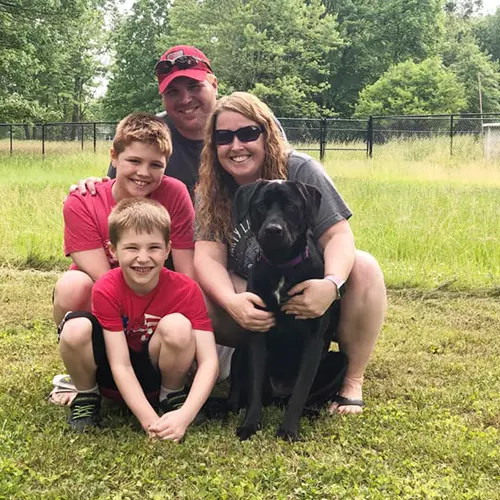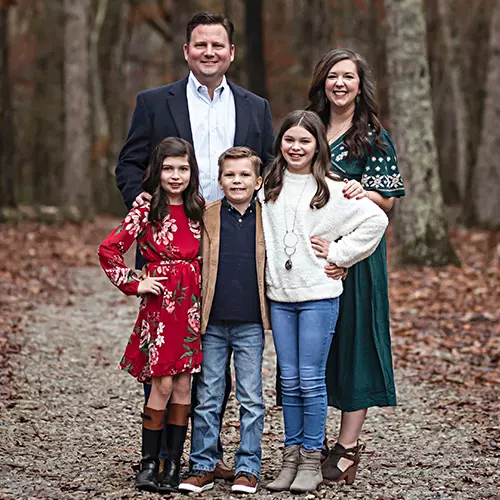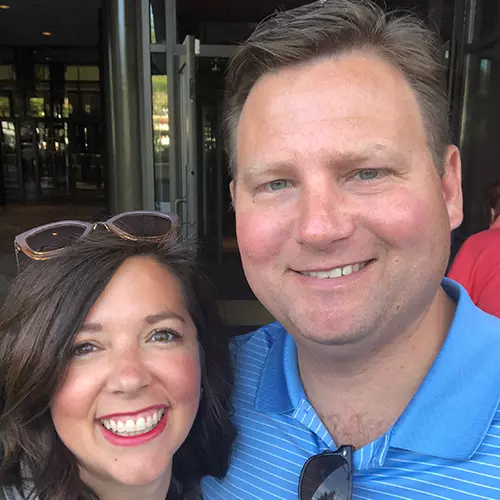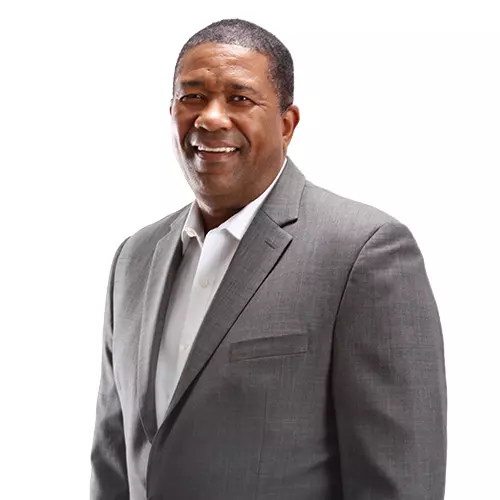Intro/Outro (00:03):
Welcome to Supply Chain Now, the voice of global supply chain. Supply Chain Now focuses on the best in the business for our worldwide audience, the people, the technologies, the best practices, and today’s critical issues, the challenges and opportunities. Stay tuned to hear from those making global business happen right here on Supply Chain Now.
Scott Luton (00:33):
Hey. Hey. Good morning, good afternoon, good evening wherever you are. Scott Luton and Greg White with you here on Supply Chain Now. Welcome to today’s livestream. Gregory, how are we doing today?
Greg White (00:43):
Good, dude. I just got back from LA so I feel like saying dude a lot.
Scott Luton (00:50):
I can’t wait to get the rundown of your trip. Tune in at 11:00 p.m. tonight, folks, to get the full travel diary from Greg White’s West Coast travels. But, Greg, today, a part of what allows folks to get wherever they want to go, we’re going to be talking about some of that stuff as we’re going to dive into a discussion about spare parts. It’s really big in the aircraft industry, really across global industry. And to do so, Greg, we’ve got some Supply Chain Now OGs in the house today as they talk about the big hidden value when it comes to spare parts, especially as organizations are globally looking for efficiencies everywhere, in particular for gains made without increasing friction between departments. Greg, it should be a great show, huh?
Greg White (01:37):
Yeah. Monday, we were just talking about MRO, and it not only takes all the parts it takes to build whatever we want to sell, but it takes the stuff that builds the parts, assembles the parts, and moves the parts. So, MRO, big topic, often overlooked, but 100 percent core to making everything happen. So, we’re going to talk about that today, yes, with Paul and Nick and something they’ve been focusing on for years.
Scott Luton (02:09):
That’s right. Focusing on, driving, moving mountains into space with organizations everywhere. So, a couple of our favorite guests.
Greg White (02:17):
They’re fast too. That’s the other beautiful thing, you know, these new technologies is you can implement them so fast, they get you to return on investment so fast, they’re easy to use. Oh, my gosh. I’m so glad I’m back.
Scott Luton (02:28):
Yeah. Completely agree. It’s not about a two-year implementation. So, more on that momentarily. And we got a slew of folks with us, Greg. Welcome everybody from Cynthia and Brad, Abacar. I almost got it. My apologies. Let us know if we get it wrong. Evelyn is back with us. Glorimar, Jonathan, great to see everybody. We look forward —
Greg White (02:48):
We got Josh Goodey’s weather from Seattle, “Yuck is all I have to say.”
Scott Luton (02:54):
Josh, great to see you as always. And looking forward to y’all’s perspective here today. And yuck is a very scientific, quantified —
Greg White (03:01):
Meteorological term.
Scott Luton (03:03):
That’s right. Folks, with no further ado, if you can’t tell, Greg and I are really looking forward to welcoming in members of the Supply Chain Now family, dating back quite some time, doing some big things across global industry. I want to welcome in Paul Noble, Founder, Chief Strategy Officer, and Nick Griffith, Senior Product Manager, both with an organization on the move, Verusen. Hey. Hey. Paul, how are you doing?
Paul Noble (03:27):
I’m doing well. Good to be back.
Scott Luton (03:29):
You as well. Nick, how are you doing?
Nick Griffith (03:33):
I’m doing great. Good to be here, guys.
Scott Luton (03:35):
Wonderful. Greg, we have had a bunch of conversations with the Verusen team. Paul, we have not only talked all things supply chain, but we’ve talked food and music and sports. And, Greg, do you know where we’re starting our conversation today with a fun warm-up question?
Greg White (03:49):
Let me guess, not supply chain
Scott Luton (03:52):
That’s right. Folks, we want to hear from our guests and Greg, and we also want to hear from y’all as we start with this fun warm-up question. So, Paul and Nick, you’re in the hotspot. Pressure is on. So, today is Cheddar Fries Day. It’s like national, maybe even international Cheddar Fries Day. But I want to use that only as a backdrop. I’m not a big cheddar fries fan – try to say that three times fast. So, I want to pose this question to y’all, who serves the best French fries in industry as we celebrate Cheddar Fries Day? So, Paul, you can be our lead off hitter.
Paul Noble (04:28):
All right. So, I’ll take it two directions. I will go first with fast food. I will say McDonald’s, yes, for the French fry win. And then, I’m going to keep it local here and give a shoutout to one of my favorite places, and I’m going to say Verusen’s favorite places, is Cypress Pint and Plate here in Midtown Tech Square, Atlanta.
Scott Luton (04:51):
Okay. Man, all of that sounds delicious. And we got a couple more answers to go. And by the way, we got to give a little shoutout, Nick, Greg, and Paul to Katherine and Amanda behind the scenes, in particular Katherine who gave us, “This is the Fry-erarchy that we’re walking through.” I love that, Katherine.
Paul Noble (05:07):
Very nice.
Scott Luton (05:08):
All right. So, Nick, best French fries ever.
Nick Griffith (05:11):
I’m going to throw a wrench in this. I was thinking McDonald’s at first, but I think I’m going to go with Jack in the Box because of the Curly Fries.
Scott Luton (05:21):
All right. Hey, and Nick’s proven we can have healthy debate and vigorous debate and supply chain and still respect each other. Gregory, slam home the final answer here.
Greg White (05:32):
Ordinarily, I would pick steak fries anywhere because I love the big flat, you can actually taste their potatoes. But I just had a fantastic super hot French fry at this place called The Sunset Tower in Hollywood or West Hollywood, whatever, while I was out there. They are regular kind of McDonald’s – whatever – cut fries, also breaded and perfectly salted.
Paul Noble (05:59):
That helps. Yeah.
Greg White (06:00):
It’s a cool restaurant and I was really impressed. And, you know, 45 bucks for a hamburger and fries, that better be good.
Scott Luton (06:11):
That would be really good.
Greg White (06:12):
Yeah. It was ridiculous whatever it was.
Scott Luton (06:14):
So, let me share a couple responses from our audience. And, folks, we want to hear from y’all all day long. We’ve got a great story between Paul and Nick, and, of course, Greg’s commentary here today. I agree with Amanda, “McDonald’s is the only correct answer.” Hey, I got to say it.
Paul Noble (06:28):
I will say this though – I’m sorry to interrupt you. I know you’re running the show here.
Scott Luton (06:30):
Go ahead.
Paul Noble (06:32):
They have to be hot.
Scott Luton (06:33):
Yes.
Greg White (06:34):
Yes. That’s an excellent point, Paul.
Scott Luton (06:37):
Paul, completely agree. It’s a great callout. Great callout.
Greg White (06:40):
Excellent point, because they hardly taste like potatoes when they’re not.
Paul Noble (06:43):
It goes south real quick.
Greg White (06:45):
Yeah. That’s why you have to eat them out of the bag on the way home.
Nick Griffith (06:49):
You can’t let them sit there and get soggy.
Paul Noble (06:52):
Stragglers.
Scott Luton (06:54):
All Right. Y’all got to stop talking about the McDonald’s fries. I’m not going to be able to make it through the hour. Allen says – Allen, great to see you – “Belgian fries are the best by far.” I’ll go with that. I’ll go with that. Katherine says, “I’m glad the Fry-erarchy is finally getting its day in the sun.” A great point and brilliant as always, Katherine. Cyprian says, “McDonald’s anytime.” I’m loving you. I’m loving it. And finally, Josh says, “Zips fries are the best.” That might be a Pacific Northwest thing. We’ll check it out.
Greg White (07:22):
Scott, I think one fair question would be to ask the Dutch and the Belgians, because they literally eat fries at every single meal. You can be at an Italian restaurant, a Mexican restaurant, any kind of restaurant, and they put these cute little cones of fries in front of you. It’s like we, in America, eat chips and salsa before every Mexican food meal. Man, they are fry aficionados over there.
Scott Luton (07:47):
Okay. We’re going to make a special trip. So, Nick, I think you were about to say something. You’re getting the last word on the fry debate.
Nick Griffith (07:55):
I was just about to say Zips is a Phoenix chain right down the street from me right now. I might get that for lunch.
Scott Luton (08:05):
Awesome. Well, folks, thank y’all for humoring us and thanks for all the great responses. Y’all keep it coming. Keep it coming. Welcome everybody. We got a lot to get into today. And then, as we teed it up on the frontend in an off overlooked aspect of global industry, I’m going to dive right in and we’re going to talk trade shows first. Because, Greg, as you and I know, folks are itching to be back in-person and there’s a lot of good stuff going on across that space. Paul and Nick just got back. Y’all just got back from, not only traveling around doing business with all the movers and shakers, but in particular the Industrial Supply Association Conference in Phoenix, as Nick was pointing out or one of y’all were pointing out, Arizona. So, give us a rundown, what was it like? What are your insights on what you’ve heard from customers, attendees? And what were the business leaders there focused on? What was the tee as an eighth grader would tell?
Paul Noble (08:55):
Yeah. Industrial Supply Association, for those that don’t know, is kind of the voice for the maintenance, repair, operations, and products channel. So, all those suppliers that sell to manufacturing and construction, industrial distributors, from nationals to independents and all of their suppliers come together and talk about what’s going on in the industry. I think some of the takeaways where, certainly, more and more every year technology and adopting technology to help overcome the inefficiencies that are still being felt across supply chains, and that they’re being charged to support their customers more from a technology perspective. So, albeit a quick hit, we have a lot of great takeaways for many reasons on where we can partner and where technology can make their life simpler so they can sell more products.
Scott Luton (09:50):
Love that. And make life easier for team members. All right. So, Nick, I’m coming to you next. But before I do, I always love seeing Tech Square. I think that’s right behind you, Paul, Tech Square, where a lot of happening in Atlanta, right?
Paul Noble (10:03):
Bright and sunny day here in Tech Square.
Scott Luton (10:05):
All right. All right. All right. So, Nick, what else did you pick up there? What would you add to Paul’s key takeaways?
Nick Griffith (10:11):
Yeah. Two takeaways that I had from talking to both the distributors and the suppliers that were there. First was how tight the labor market is. You hear about layoffs happening in tech. But in the industrial space, really struggling to find new talent that wants to enter the industrial space. There’s less company loyalty now. So, difficulty to hold on to talent. And then, and we’re thinking about all the tacit knowledge that these people in this industry have, there’s kind of been a lack of systems that have been built to capture that tribal knowledge. That was the first takeaway I have. The second takeaway I had was, manufacturers and their distributors, especially the manufacturers, are really struggling to understand where the end customers, how the end customers are using their materials, where they’re using them. So, there’s a lot of initiatives to help bring manufacturers, their distributors, and their end users together to collaborate. The biggest takeaways for me.
Scott Luton (11:15):
Yeah. Creating wins for the whole ecosystem, Nick, is what I’m hearing you say there. All right. So, Greg, getting a good start between good food and great practitioner perspective. Your comments, Greg?
Greg White (11:27):
Yeah. Well, I think we have to acknowledge that the thing that we’ve discovered is the great resignation. I think people forget that. But the great resignation was not about Gen Z and Gen X and Gen Y and millennials getting out of the workforce. It was about baby boomers getting out of the workforce and getting out for good. So, we have lost a lot of tribal knowledge. And, Scott, we’ve talked about that quite a bit. So, capturing what remains of that or the infrastructure that was provided by that is really critical. And AI tools and that sort of thing are really, as my philosophy guy says, they’re not our overlords. They’re our children. And we have to teach them what we know about the business so that they can use that to learn and operate and improve the business. So, imparting that knowledge is absolutely critical.
Scott Luton (12:19):
Yeah. I love that analogy. Okay. A couple quick comments. Josh says, “Greg, looking good.” Thanks for joining us, Josh, via LinkedIn. Let’s see. TSquared who holds on the fort for us on YouTube says, weighing in —
Greg White (12:33):
Checker’s and Rally’s.
Scott Luton (12:33):
… Checker’s and Rally’s on the French fries angle.
Greg White (12:36):
I had forgotten about those.
Paul Noble (12:38):
Especially if we’re doing cheddar fries.
Scott Luton (12:40):
Next time, Paul. Next time. I promise. And Silvia is making me real hungry because she’s talking biscuits with Barbara Melvin and hash browns that were delicious. Silvia, man, safe travels. I look forward to seeing you again really soon. Okay. Hey, sometimes things happen. We may have lost Paul for a second there. We’ll have him right back.
Scott Luton (12:58):
So, getting back to the conversation now that we’re starving, not just for French fries, but for some more supply chain knowledge. So, Nick, you kind of alluded to cutting costs, and that’s part of the push for efficiencies and continuous improvement and for industry to do better. And we’re going to talk more about a supply chain area that a lot of folks are overlooking, and Verusen’s growing business is testimony to that in many ways. But before we get there, I want to recognize, we’re seeing organizations, of course, unfortunately, cutting headcount, cutting out new tech investments, whether it’s long implementation cycles, as Greg is talking about, or even shorter ones. But how do we get all here? So, Nick, what I want to ask you is what has caused supply chain spending to get so out of hand?
Nick Griffith (13:44):
Yeah. So, there’s obviously been huge disruptions in the last three to five years. And as we came out of COVID, if we think about on the demand side, there was a explosion in consumer demand right after the pandemic. And that caused manufacturers to order more direct materials to support that demand, but also to increase their buffer of MRO stocks to keep their plants up and running. And now that demand or the rate of that demand is starting and it’s going to continue to slow into 2024, so some of that demand has shifted as well. So, that’s one big aspect to the large spending.
Nick Griffith (14:23):
And then, also, on the supply disruption side, we obviously have the war in Ukraine, tensions with China, and now the unrest in Sudan that’s causing a lot of manufacturers to overstock and over order or not have their supplies at all. And another thing to tack on is because of the decentralized nature of MRO, it’s caused a lot of manufacturing plants to react locally without looking at the big picture. All of those are contributing to this spending that we’re seeing in supply chain and excess working capital everywhere.
Scott Luton (14:59):
Nick, excellent point. I want to add in Memory here, increased uncertainty on the supply side has increased spending on MRO on their end. And Memory, of course, is a practitioner out there in global supply chain. So, thank you for sharing, Memory. I hope this finds you well. It’s been a long time. All right.
Scott Luton (15:13):
So, Paul, let’s talk about the data side. Maybe bad data that’s driving at least a big portion of this headache. Why is bad data still a challenge?
Paul Noble (15:23):
Yeah. Everyone suffers from bad data. All systems have been generally dependent. And there’s not going to be any less data coming through. And so, the propensity has always been to chase perfect data, try to govern it, try to get humans to change and enter things more appropriately. And I think that caused a lot of the problems.
Paul Noble (15:47):
And Nick, I think hit the nail on the head, is, when the pandemic hit and then subsequently after, because of bad data and because of planning off historicals, everyone had to boost inventories to make sure they de-risk themselves because they had the data to support or the intelligence to support otherwise. And then, they had to buy all those materials from whoever they could buy it from. So, you created a significant long tail now that everyone on top of the labor challenges are dealing with a boosted working capital, and inventory number, and a significantly long tail of pricing discrepancies, and duplicate materials, and duplicate suppliers that they’re trying to wrap their arms around, and it comes back to data. So, how do you surface those things so you’re not spending years chasing what you can work on versus attacking it now and working together and being able to go execute upon that quickly as the next things on its way.
Scott Luton (16:52):
Executing quickly and getting outcomes quickly. Paul, I love it. And Greg, I’m coming to you next. But I also like what Paul said earlier, folks need to know there’s not going to be less data in our future. Greg, I can’t wait to get you to weigh in on what you’re seeing based on Paul’s —
Greg White (17:06):
There’s so much here. One is we’re backsliding as an industry. We’re falling back into this notion that it is a cost saving exercise rather than a risk balancing exercise. And particularly in MRO and manufacturing in general, it’s a brute force methodology. It’s not scientifically driven. There’s not a lot of technology supporting it. It’s very manual. A lot of that goes back to the fact that for decades, manufacturers and brands have been able to obfuscate the fact that supply chain inadequacies fall on them, not just the end provider to the consumer or user of various products they’ve been able to hide in the shadows. Well, there’s nowhere to hide since the great toilet paper shortage of 2020. Everybody knows that if Target’s out or if Grainger is out, but, ultimately, Lutron is at fault as equally as much as anyone who is actually serving the end user. So, we have to acknowledge that and we have to acknowledge this risk balancing notion rather than this brute force notion.
Greg White (18:13):
The other is that there is a lot to learn from those portions of the industry downstream – I say downstream, closer to the consumer, right? – that have had to have efficiencies. And we can use that knowledge to push back up into the supply chain, and use more science, and use more efficiencies where it’s not this direct trade off. If I want better service levels, I have to increase my inventory. That’s not true if you use science and you control your data, like Paul is talking about.
Paul Noble (18:44):
I’ll add one quick thing, Scott, and it goes back to that data aspect of if I didn’t know what I needed supply, my supply base has changed, my availability of supplies changed, I don’t know my demand so my suppliers don’t know my demand and what I need, so they boost inventories, we boost inventories, everything goes up. I mean, we’re going to see a ton of excess and obsolescence and shadow accounting coming into play to go, “What the heck are we going to do with all these things?” It goes back to data.
Scott Luton (19:20):
The operational insurance market, the golden age of operational insurance is what I’m hearing. Paul, I want to stick with you for a second, because as everyone’s pointing to, as we all know, we got so much more heavy lifting to do. I mean, sure, the pandemic and some of the lessons learned there, we’re starting to see some gains as we apply those lessons learned, new solutions. But, man, we’re scratching the surface, the tip of the iceberg. So, to drive more action that needs to happen, where should business leaders start, Paul?
Paul Noble (19:49):
Yeah. First, they should start. To do that, there are things that —
Greg White (19:56):
[Inaudible]. Just start.
Paul Noble (19:57):
Right. That’s always, like, go on a whole different tangent there. I think the aspect is, supply chain has a big propensity of over-planning and being very meticulous to detail. You can’t have a perfect plan. There are things that you can do though that are purpose-built for areas of concern and priorities for you. So, I would say look at those. And look at things that are not the traditional playbook. I think there’s still too many organizations that are going to the traditional playbook, going to vendors and technologies and processes that got them there that, all of a sudden, “Hey. We got the new solution.” “Well, where were you?” So, I think looking at that. And then, looking at supply optimization as a whole, that it’s not several solutions that create more silos of data and more inefficiencies for operations and procurement and reliability and IT to work together. There is a place where supply optimization, really, it’s part data, part inventory, part procurement, part risk, and how those influence one another both from a people and a system perspective. And that’s a drum we’re beaten on a daily, but that, I believe, is really the future of supply chain and how we need to look at these things to walk fast and get fast results.
Scott Luton (21:32):
Paul, love it. All right. Before I come to you, Nick, as we dive deeper into the MRO maintenance, repair, and operations, Greg, I’d love for you, you got to kick out of what Paul said a minute ago. First, they got to start, and then what else would you share? What else would you comment on what Paul just shared there?
Greg White (21:47):
I think you start with baby steps. You start with the easiest option, the biggest pain, and the easiest solution to it. So, Paul alluded to this before and you’ve talked about it, too, Scott, this notion of the data cleanse – God help us – it’s the neverending story. And I think the beautiful thing that I’ve seen in Paul and his team have facilitated is this notion that you don’t have to have perfect data. You can reconcile that and identify that, “Hey. You called a pail on this plant and you called a bucket in that plant, but they’re both cans of paint,” or whatever they are, right? And start to reconcile that, going back to what Paul was talking about, this sort of brute force methodology where somebody labels it this and somebody labels it that, you can reconcile that with advanced technologies. Which, to the point, Nick, that you were talking about, this notion of reduction on spending in technology, this is precisely the wrong time to do that. We have a labor shortage in supply chain. It’s not going to be relieved anytime soon. We have this knowledge exodus from baby boomers leaving the industry.
Greg White (22:59):
We need to capture that data, and internalize it, and make it simple to tackle some of these problems that are pivotal to the ability to move forward to get started. And it doesn’t have to be a huge heavy lift. I think that’s one of the things that’s holding so many companies back is they believe we have to have this perfect data. The truth is just understanding that your data is imperfect and being able to relate imperfectly labeled items, let’s say, simply to one another is a huge and simple and rapid solution.
Paul Noble (23:32):
Yeah. Find and maintain and sustain that balance of capital spend and risk. You can’t trade one for the other anymore or you’re going to be, really, a world of hurt.
Scott Luton (23:44):
A world of hurt. Excellent point. All right. So, Nick, I promise I’m coming to you really quick. TSquared says, “Definitely need to embrace the risk-hedging supply chain more.” Memory says, “A great starting point is on performance feedback, compliance and risk. A focus on categories will be useful too. The good old 80-20 rule.” And Kimesha, you asked a question. We’re going to get to this. We’re going to equip you with some resources and some tools. So, great to have you, Kimesha. Again, enjoy your perspective as well. And I know we can’t get to everybody’s comments, but we’re going to try to work them in as much as we can. Okay.
Scott Luton (24:14):
So, Nick, we’ve mentioned MRO a couple times, again, maintenance, repair, and operations for some of our friends and listeners and viewers that may not be caught up in all the acronyms. Why do you think MRO is often overlooked?
Nick Griffith (24:26):
So, if you look at kind of total product costs, MRO typically takes up five to ten percent of the product costs, which is much less than, say, the direct materials that go into creating the finished goods. And so, historically, when businesses have had to address supply chain costs, the easiest thing to do is go and optimize either your direct material inventory or how you purchase those direct materials. And this kind of lack of attention of MRO has often led to businesses creating a decentralized approach for dealing with MROs. So that, if they essentially do want to begin to address it, it’s kind of a skeleton quality. A redheaded stepchild skeleton in the closet. Like, you think you might have to go to each individual plant and address it plant by plant. So, it seems like this insurmountable task.
Nick Griffith (25:23):
And then, the other thing I’d like to mention is, there’s also been attempts to take approaches or solutions that originated in the direct material space and apply those to indirect and MRO. And a lot of times those initiatives had failed because they’re built on the assumption of clean data – typically, direct materials have cleaner data – as well as the fact that direct materials are typically centralized. They have top down initiatives. Whereas, in MRO, you have to bring each plant along. So, it makes it a really difficult space to address with technology and solutions.
Scott Luton (26:03):
So, Nick, I want to pull something on you said there. You shared a lot of goodness there. Greg, I’m getting you to weigh in. That is a terrible assumption to make, to assume all of your data is good and ready to be used. Greg, comment on that or anything else Nick just shared there.
Greg White (26:16):
Yeah. I think it’s not an assumption that people make in MRO. I think it’s actually the opposite. The assumption that they make is that their data is so cludgy that they can’t possibly do anything. They just have to keep grinding through their spreadsheets and clipboards and God knows what else people have to deal with. But I’ve been there in other industries, it was not always true that the data was sufficient even with direct or finished goods. And you just have to really, really focus on it. And, truthfully, truthfully, you have to find the simplest solution. And even with bad data, technology is still better than a manual process.
Greg White (26:58):
So, just one example that immediately came to mind, and Kimesha is asking some questions about who’s doing this well, I would argue that there’s a lot to learn from retailers who have tight margins, high efficiency, and a lot of supply chain risk. Because decades ago, for instance, we had what’s called perpetual inventory way back in the ’80s. We knew what we had on [inaudible] hand of every SKU in a system. But that gets outta whack with theft and breakage and obsolescence of products, and various and sundry other things, incorrect receivings, that sort of thing. But even so – I worked for a major auto parts chain – even with perpetual inventories, only at about 70 percent accuracy, it was still better to use technology and to reconcile periodically than to do it manually.
Scott Luton (27:52):
All right. Man, such a great conversation.
Greg White (27:56):
We need to great about data. Figure out how to manage it.
Scott Luton (27:59):
That’s the point. That needs to be at the back of every t-shirt of supply chain practitioners everywhere. All right. So, Paul, I’ll come to you. And I want to play maybe devil’s advocate perhaps. So, clearly, there’s major opportunities when it comes to MRO, especially look at reducing working capital like Nick and Greg and yourself have kind of already spoken to. But does that introduce more risk into your production? And if I may, Paul, if you’re reducing inventory, don’t you risk more not having the right part at the right time at the right place? Your thoughts, Paul?
Paul Noble (28:33):
Yeah. That’s always a propensity. And that’s where it’s not only data to feed something that can try to give you that optimal min/max or reorder point or what you’re going to carry, where you’re going to carry it. It’s also the incentive of the person driving that decision and the inability for cross-functional teams that collaborate. So, procurement and operations, while they work together and they work in unison to drive value for the company, they have different incentives. And those don’t always align when, “Hey. I know we can save money or we can funnel this category or spend to a certain vendor.” They often have a difficult time getting that executed, not only in the system, but across a plant network. So, I think that’s a big challenge.
Paul Noble (29:25):
And there’s essentially this kind of thing, it touches on a couple of the past few questions that we see, the most angst and challenge on is this kind of fear of messing up, so FOMU. Not FOMO. FOMU. “Hey. We tried this in the past. If we reduce our inventory and then things ran out, and so we’ll never do it again.” Or, “I tried this process with a certain vendor, and while I understand this new approach may be the bees knees, I know we’re talking about that in the free show, I’m scared to do it and I don’t know that I can get those involved to work together because it’s a team effort.” And so, I think that with a lot of things is made while we’ve had a lot of great innovations, it’s still early on within the technology space in supply chain. People still are a little gun shy in terms of what they want to put their name on because of those reasons, and that’s really a key driver.
Scott Luton (30:31):
All right. So, a couple follow up comments. Number one, do bees really have knees? I don’t know.
Paul Noble (30:39):
[Inaudible] or something.
Greg White (30:37):
Right. Right. Right. In the ’20s, they did. Maybe [inaudible].
Scott Luton (30:43):
Gosh. Secondly, I’m going to latch onto this FOMU, fear of messing up. That is such a great call out, Paul. Nick, I’m coming to you next. Because that not only applies to this situation, that applies out across industry. That paralysis by analysis, folks are so scared of doing the wrong thing. But to Greg’s earlier point, we got to be bold and fearless. We’re going to make some mistakes, but we got to take some kind of action here. Nick, follow up on Paul’s comments there.
Nick Griffith (31:10):
Yeah. I mean the whole notion of FOMU, when you don’t have visibility to where your true service levels really are, I really feel for the people, the plant managers. If they can’t turn around and say, “Yeah. We had the plant up and running where we had this particular material 95 percent of the time. Just this five percent of the time, we didn’t have it,” you don’t have any visibility to that and you can’t report that upwards, you’re just going to overbuy. So, first, think about introducing visibility to service levels. One is a way for organizations to start having conversations around should we even stock a material to be 97 percent service level or should it be 90 percent? So, that’s number one.
Nick Griffith (31:56):
And then, the other thing to mention is, with service levels, you hit this point of diminishing returns. So, for you to go from, like, 90 to 95 percent service level is often a fraction of the cost for you to go from 95 to 97. And making that visible to both procurement, to the managers is kind of the first step to enable both of those parties to have conversations where they can discuss whether we really want to have this level of working capital at the plant.
Paul Noble (32:28):
One quick [inaudible] there. There’s several I want to say, but one quick add-on is, also, like with many of those aspects – there’s actually two things, Scott – so it’s always been a propensity to try to buy better and then guess on demand and inventory across our network, especially in the MRO space.
Scott Luton (32:49):
It’s like supply chain roulette, Paul.
Paul Noble (32:51):
Yeah. Exactly. But it really —
Greg White (32:53):
Russian roulette.
Paul Noble (32:55):
You can never really confirm the need. You’re tracing it. You’re planning off historicals, failure, inability to predict. So, you go, “Let me verify the inventory first to influence the spend that helps control the risk.” They all help each other. And if you’re choosing two of the three or one of the three, you’re probably taking the wrong approach. And then, I think where we’ve seen a lot of these things is that, for too long, and I think that we’re seeing a massive shift in that, organizations and individual personas have had to fit their processes to the technology they were buying versus a technology being able to enhance and augment what they do as a business. So, if you’re looking at technology investments, I would challenge why you need to change something to fit a technology versus a technology being able to adapt all the external and human elements that happen across global networks.
Scott Luton (33:59):
Yeah. Well said, Paul and Nick. Greg, before we move into some exciting news here with this dynamic duo, Greg, what’d you hear there in Paul’s two bonus points?
Greg White (34:11):
Well, throughout both of these comments, I heard lack of visibility, I heard fear, and lack of knowledge or insight on what to do. All of which are human conditions. So, in case you can’t tell, I believe strongly because I’ve seen it 1,500 times in 1,500 implementations that I’ve conducted, I’ve seen the ability to apply technology that alleviates all three of those things instantaneously. There are proven methodologies for how to attack this problem. And the problem exists only in our mind, our fight or flight mentality, our lizard brain that kept us alive when we were cave dwellers, hinders us now these days. And technology has that visibility. It knows that you’ve got this part in another plant and you don’t need to have it in your plant because it’s 20 minutes away if you ever need it. That kind of thing. It never has fear because it has that visibility and it knows what to do to solve the combinatorial analytics problem that is MRO and supply chain.
Greg White (35:20):
So, again, this is why we have applied – and, again, Paul and I have had this conversation many times – so much technology at the retail and distribution level for decades, decades ahead of manufacturing and brands because the risk was so great and the margins were so low and so much lower than manufacturers have. We couldn’t afford to be sloppy. And truthfully, I love all my manufacturing friends, Rick McDonald is going to call me and cut my head off after this call. But manufacturers have been able to be a bit sloppy with their supply chains because where a retailer might have one to three percent net margins after taxes, big manufacturers and brands have between 9 and 22 percent net profit after taxes. That’s a lot of slack that they can absorb in their supply chain. But what has changed really is the visibility of the consumer and the customer so that they know, hey, Proctor and Gamble or whoever else, all the way upstream is responsible for this problem.
Greg White (36:27):
So, the thing that I think brands and manufacturers are starting to realize is there is now nowhere to hide because of the awareness of the consumer and all of their customers as to where blame does good and should lie in the supply chain in every single instance. So, companies have to embrace that notion. They should fear that and then apply technology to solve this problem so that they don’t have to put that fear. I’ve even done a role very similar to these MRO buyers and it is a very, very stressful role. Because you never quite know whether you’re doing the right thing and you know you’re the one that’s going to get punched in the face if anything goes wrong.
Scott Luton (37:07):
That’s right. Hey, for all you fellow Star Trek fans out there, there’s no cloaking in supply chain. There’s no disappearing act. Well said, Greg. All right. So, we’ve got some great exciting and good news and y’all know we love good news here. I’m going to ask Paul and Nick about that in just a second. But I want to share a couple great comments here. Vanesa talks about, “Sometimes leaders don’t want to re-categorize pieces of data out of fear of losing sight of trends, et cetera, but that is irrelevant if you can radically improve the processes once the data is better categorized.” Excellent point there. Yeah. Please, Greg.
Greg White (37:40):
Can I address that?
Scott Luton (37:41):
Please.
Greg White (37:42):
Yes. And I think the other thing we have to think about is why be a slave to the or when you can have the freedom of the end. Why not re-categorize that data for some purposes and leave it in its original state where it’s already offering value. Again, guess what I’m going to promote here? Technology. Technology can do both of those things. And you don’t lose the trend analysis or other analyses that are provided by the data in its current state and you gain additional value from converting or categorizing that data for other purposes.
Scott Luton (38:20):
Yes. Yes. The freedom of the end.
Greg White (38:23):
End, end, end..
Scott Luton (38:24):
Yes. The freedom and empowerment of the end. Greg, that is William Shakespearean. I love that. Jonathan is talking about gaining buy-in as always in motion. That’s a great comment because you don’t just cross that finish line with all the changes going on. Jonathan, great point. And Josh – it plays on something Greg said or one of y’all said earlier – “Your survival instinct is killing you. “
Greg White (38:44):
Well, that’s a t-shirt right there.
Scott Luton (38:45):
It sure is. All right. So, Paul and Nick always bring in truckloads of goodness. Paul, I’m losing count how many appearances? You’re probably top five here at Supply Chain Now, dating back to that great Godfather’s Pizza lunch we had ages and ages ago.
Paul Noble (39:00):
It will be missed. Yes.
Greg White (39:01):
Is it gone?
Paul Noble (39:03):
It’s gone.
Scott Luton (39:04):
It’s gone. In Atlanta, it was right across from the varsity, to give folks a frame of reference.
Paul Noble (39:11):
Another casualty. Yeah.
Greg White (39:13):
Still hard rise, I’m sure, right?
Scott Luton (39:14):
Probably. But on the flip side, on the flip side, tons of growth at Verusen, and I want to talk about the latest growth. So, y’all got some exciting news to share. Paul, where are we going to start with that?
Paul Noble (39:27):
Yeah. I’ll tee it up and then I’ll throw it over to Nick because he’s done an incredible job building and mobilizing our team, working with customers, and bringing what we’re very excited about to market. It’s a supplier experience and it’s kind of this next evolution of our part in helping organizations, say, find their material truth, that perfect balance of capital and risk without being dependent on data and a lot of traditional things.
Paul Noble (39:54):
And so, trusted supply is this supplier experience, as many of you that may have tuned in before, Verusen since going to market, we’re in our third year in market, we’ve served large global manufacturing or end users of products. And we started there strategically because if we could understand the usage and the dirtiest of the data, then as it gets passed through the networks and where we’re trying to drive supply chain resiliency and we can understand and drive the outcomes of the user, that’s inherently important to what a supplier needs in connecting those dots.
Paul Noble (40:32):
So, what trusted supply is, this ability to use our data engine, you know, the core IP of our company, to allow suppliers and distributors and integrators that support plant’s operations to be able to understand their ten, hundred, thousand customers’ dirty data in its natural language so they can run it against their inherently cleaner catalogs, and find out what they can sell, how they can increase service levels, and how they can drive better network resiliency for their customers. That’s the whole premise of it. It’s the natural next evolution and we’re super, super excited about it.
Scott Luton (41:15):
All right. So, Nick, before you add to the exciting news about trusted supply, that data engine Paul talked about, is that a supercharged V8 Corvette engine? What car would you assign to what that data engine moves the speed of you? Are you a Corvette fan?
Nick Griffith (41:30):
For me or for Paul?
Scott Luton (41:31):
Yeah. Nick. Oh, sorry. Nick. Yeah, Nick. I’m going to say Paul.
Nick Griffith (41:36):
I think we’re going to have to go with the Tesla.
Scott Luton (41:39):
Okay. All right.
Paul Noble (41:41):
I want to answer that too. And I want to say where we are going, there are no roads.
Scott Luton (41:47):
Oh. I love that.
Paul Noble (41:51):
[Inaudible] gigawatts or whatever it was.
Scott Luton (41:53):
Lots of ’80s references today.
Paul Noble (41:54):
Gloria. Yeah.
Greg White (41:57):
Which is coming back, Paul.
Scott Luton (41:56):
It is. Nick, all that kidding aside, this is some really cool news, big development and the continued march to change our industry does business, right?
Nick Griffith (42:08):
Yeah. So, we’ve been addressing the data challenges that exist for end users. We wanted to take that upstream to help address, not only the data challenges that distributors and their upstream manufacturers have within their own four walls, but the data challenges that exists between multiple organizations at once.
Nick Griffith (42:30):
So, the first value that suppliers, the distributors, and the manufacturers will get out of the trusted supply experience, we’re going to be addressing their RFQ process. And so, we’ve been talking also a lot about the labor market challenges today. How do you capture a lot of the tacit asset knowledge that exists around your materials but also your customer’s materials and how your customer experience team enables that interaction. So, we’re going to be helping distributors and manufacturers win more business and win it faster by running their catalogs up against end user RFQs and automating a lot of that process.
Nick Griffith (43:14):
But, also, we’ll be capturing a lot of set knowledge that comes from users by asking those users to confirm the matches that we are presenting to them, so that over time we’ll start converting the tacit knowledge that exists with individuals today into more of a corporate memory that an organization can use going forward when they know that these people who have 30 years of experience in the industry are going to retire.
Scott Luton (43:41):
Yeah. Well said, Nick. All right. Paul, you got some bonus points. Paul.
Paul Noble (43:45):
Bonus points. [Inaudible] bonus points. So, quick example. So, if I’m an industrial distributor and I get 10,000 line RFQ from an organization, I get their dirty data and I got to try to figure out line by line what can I sell them, how do I price it, and that can take weeks. We want to bring that down to hours by using this technology to be able to understand I call it this, they call it that, but this is what I can sell them or this is what I can substitute. And treat these RFQ processes as a way you can scale from one to the next one to the next one to the next one, rather than treating everyone as an individual project that inhibits you from revenue and service level growth. So, again, that’s just the beginning, but it’s really what the market was calling for as we talked to more than half of the top 50 industrial distributors.
Scott Luton (44:47):
Paul, I love it. Congratulations to you both and the whole Verusen team for this latest big offering and big news with the trusted supply. Greg, I’m going to get your comments in just a second on this development, but I want to point out, this is Koray Kose – our dear friend from Gartner. Koray, hope this finds you well – “The opportunity cost is enormous,” as he points out, enormous, related to both taking action in your business, but also related to missing Supply Chain Now programming. So, Koray, thank you so much and look forward to reconnecting soon. Greg, trusted supply as Paul and Nick, whether it’s driven by Tesla, driven by Corvette, or if it’s driven where there are no roads, I’d love to get your comments on this latest development from the Verusen team.
Greg White (45:28):
Yeah. Well, first, brief disclaimer, big Giants fan and shareholder but for a good reason, and it’s this exciting stuff that’s happening. I think we have to acknowledge as supply chain professionals that supply chain does not occur inside your four walls. It doesn’t even occur with just the direct vendors that you have. It occurs with hundreds, sometimes thousands, or, in the case of big companies, millions of participants in your supply chain. And reconciling that can be very, very difficult. So, to see that there is a tool out there that actually creates a trust platform for your suppliers, for the data that you get from them, for their activities and performance, it’s incredible and completely necessary.
Greg White (46:15):
If there’s anything that COVID taught us, it’s that, first of all, it’s not a supply chain. It’s more of a commerce ecosystem. Butterfly flaps its wings over here and toilet paper doesn’t show up in Costco. But I think this is what supply chain needs to evolve to be, not just visibility between trading partners, the action and trust and activity between trading partners. And a continuing growing base of knowledge and expertise of both the products that you share and the trading relationship that you share. So, this is the future of [inaudible], being interactive and being fully connected like an ecosystem.
Paul Noble (47:02):
Yeah. It’s been talked about for so, so long and desired for so long. And we’re excited for the beginnings of what that intelligent connected supply chain or that collaborative visibility can really be to drive mutual value across the supply chain.
Scott Luton (47:19):
Yeah. Well said there, Paul, and Nick, and Greg. And, hey, we’ve got a couple questions in the comments. Hey, the Verusen team will get back to you. Joe, appreciate your question around does it include large language models and some other questions. We’ll get back to you, I promise you. Maybe you can get a cup of coffee with the uber talented Paul, Nick, and Verusen team.
Scott Luton (47:36):
Okay. So, Paul, what I want to do here, and we got some resources to share with folks, folks probably have a pretty good sense maybe of what Verusen does, but just in case via your earlier appearances and today what they’re hearing, if you had a nutshell to put in the value proposition that Verusen presents, what does Verusen do?
Paul Noble (47:56):
Yeah. So, we’re positioned as a materials intelligence company that helps drive supply optimization for organizations. We talked a little bit about that today. Simply, our manufacturing customers subscribe to these models that we’ve developed that helps eliminate data cleansing, eliminate the need for system integrators, and eliminate heavy analysis to drive the inventory spend and risk outcomes that they’re really going after. And now, subsequently, we’ve applied that technology now to the supplier space so that they can receive that dirty data and our models can match it to their catalog for their prospects, their customers. And across, we can help promote their individual network optimization. But then, the next evolution and what’s coming is the ability to connect those dots and truly extend your network outside of your four walls of those suppliers. So, we live and breathe that and we’re solely in the material space and work with big brands across all CPG categories and in most other major manufacturing [inaudible].
Scott Luton (49:04):
Yeah. Well said, Paul. Love that. Congrats on all the growth. And Paul and Nick and the whole team brought some resources. I love that. And Kimesha, yes, not results or outcomes in years, not months, but in some cases hours. That is amazing.
Scott Luton (49:19):
All right. So, let’s check out some of these resources here. The first one I’m going to pop up here is this white paper on How to Reduce Your MRO Costs. You’ve probably picked up some ideas just in the last hour, but, Paul, why should folks check out this white paper.
Paul Noble (49:33):
Yeah. It’s talking about a lot of the foundational things, and where things were traditional potentially in today’s world, misconceptions of how do you start wrapping your arm around what Nick talked about earlier has traditionally been too complex to really try to prioritize and really wrap your arms around. So, this just helps give some of those foundational aspects.
Scott Luton (49:58):
Wonderful. Wonderful. And Nick, Greg, and Paul – I like this – I think this is still Koray, “Dirty data. I think Paul just coined a term. Sounds much more relatable than unstructured data.” Maybe R-rated data, maybe X-rated data. Who knows? That’s pretty good stuff there. All right.
Scott Luton (50:14):
So, we’ve got other resources though. We’ve got, Don’t Let Unplanned Downtime Be a Thump Thorn in Your Side. And, man, it can be a lot bigger than a thorn. Some of those downtime surcharges are out there, especially in manufacturing space. So, y’all check that that out. We’re going to drop the link for that as well. And Supply Chain Optimization. Hey, Greg, it requires more than technology. It also needs change management, right? Greg, whether it’s one of those three resources or whether it’s what Paul spoke about Verusen, we’re going to make sure folks know how to connect with Paul and Nick, what would you add to that, Greg? What maybe deserves some demystifying, Greg?
Greg White (50:49):
Yeah. I think what you’re seeing here and you’ve seen in all of our interactions with Paul and his team is that this is a practitioner who knows what the problems in the industry are. He’s done a ton of research and applied science and technology to it. Over the last several years, we’ve seen kind of Johnny-come-lately to the supply chain game come in and try to oversimplify it and think that they can solve it. And we’ve seen companies, like Slink and others, just completely implode because they didn’t know the combinatorial analytics that are inherent in supply chain. They didn’t know the complexities and the interactions between enterprises that exist. And it’s really a rare thing that you see somebody who has been both in the industry for a long time and sees the disruptive opportunities in that industry and completely changes the game.
Greg White (51:40):
What they’re doing at Verusen is essentially amplifying the solutions so that it’s simple, easy, and the technology provides you with guidance, recommendations, and simplification of the process support that we just talked about. Simplification of that process support that allows you to get to outcomes much, much more quickly and in much greater measure. And even in measures that are counterintuitive to what we’ve all learned and been taught, vis-a-vis the beer game and other things we’ve been taught in supply chain school, that you can both optimize your inventories and increase your performance. And it is definitely out there. So, I think the thing that this really demonstrates is the power of people that really know the practice, that really know the industry, really know the business problem, and yet have sort of ensued all of the best practice of history and created an entirely new best practice from a new perspective that considers the value of data, the complexity of the supply chain, and the power of technology.
Scott Luton (52:49):
Yes, Greg. And to some of our listeners, some of our viewers, if this is the first time you’ve caught one of these conversations, Greg and Paul did not use the pale and bucket analogy. It’s like the first time.
Greg White (52:59):
I did use it.
Scott Luton (53:00):
Oh did you? I missed it.
Greg White (53:01):
I did use it earlier. Yes.
Scott Luton (53:02):
My ears are big but don’t catch everything.
Greg White (53:04):
[Inaudible] . Somebody have to rewind.
Scott Luton (53:06):
Fake news. Fake news. But, hey, so folks that can see this, I’ve got two black writing devices, people in organization may call this a pen and may call this a writing instrument. And it can create some of that massive overbuying that Nick and Paul and Greg both have been talking about for the the last hour.
Scott Luton (53:25):
So, Nick, man, we could easily talk a couple more hours here on, not only things that business leaders need to be doing to help their team to help the organization, but the great news coming out of Verusen. But, Nick, for that and more, and folks have any other questions because there’s been some questions in the chat, how can folks connect with you, Nick Griffith?
Nick Griffith (53:45):
Yeah. So, you can find us on LinkedIn, either Paul or I individually, or go to our Verusen LinkedIn page. And you can also find us on our website at verusen.com.
Scott Luton (53:57):
Verusen.com.
Nick Griffith (53:59):
I think I am getting that right.
Paul Noble (54:02):
You are. You are, yeah. And Verusen AI on some of the social channels. Yeah, reach out. We’d love to walk you through this new approach.
Scott Luton (54:12):
Well, Nick, I got to ask you a question. I’m assuming you’d be willing to eat some delicious French fries and a cheeseburger and talk shop with anyone out there. Is that right, Nick?
Nick Griffith (54:24):
Absolutely. Yeah. Whether it includes fries or not [inaudible].
Scott Luton (54:29):
Wonderful. And we’re going to drop Nick’s LinkedIn as well as Paul. Paul, I’ve known you for as long as I have. I know the passion and the change you’re driving. And I love how you jump into any conversation, especially trying to help. So, I know you welcome conversations over maybe adult beverages or coffee, your pick. Paul, how can folks connect with you?
Paul Noble (54:52):
Yeah. The same thing as Nick, @pauljnoble on Twitter. The LinkedIn URL that was so nicely dropped there. Or just reach out, Paul J. Noble.
Scott Luton (55:03):
And, Paul —
Paul Noble (55:05):
We’ll come find you.
Scott Luton (55:07):
I love that. You hear that, Greg? They’ll come find you. But whatever you do – and, Greg, I want to wrap here. And, again, big thanks Nick Griffith and Paul Noble with Veruseb – but I want to play one of the most important things from what I’ve heard over the last hour is what Paul mentioned on the frontend, one of his responses, you got to take action. You got to take action. So, Greg, what’s one of your favorite things you heard here today before we wrap today’s show?
Greg White (55:34):
I think that the most encouraging thing has to be that you can do this rapidly and simply. And we’ve seen it. I mean, I’ve seen it as a shareholder. I’m not privy to every single detail, but I’ve seen some of the results that Verusen customers have. And they’re very encouraging. I mean, they are big, big money in a very, very short time and sustainable results. It’s not a big hit. And then, everything goes back to normal. It really does set – I can’t believe I’m going to say this – a new normal —
Scott Luton (56:08):
Oh, man.
Greg White (56:08):
… where they maintain their working capital at a new level and are able to perform at yet a higher level for good.
Scott Luton (56:19):
I love that.
Paul Noble (56:20):
Yeah. And we were doing AI before it was cool.
Scott Luton (56:22):
That’s a great callout. That’s right. And do it so well.
Greg White (56:27):
[Inaudible] somewhere.
Scott Luton (56:29):
So true. All right. Again, big thanks to our guests here, Nick Griffith and Paul Noble, dear friends, OGs here at Supply Chain Now. You can find them at verusen.com. And folks who may be listening, V-E-R-U-S-E-N.com. Thank you, Paul.
Paul Noble (56:45):
Thank you all.
Scott Luton (56:46):
And thank you, Nick.
Nick Griffith (56:47):
Thank you guys.
Scott Luton (56:49):
All right. Greg, always a pleasure. Hey, Greg, we should thank all the folks that tuned in. There’s a ton of comments and questions we couldn’t get to. Thank y’all for doing what you’re doing. Also, folks behind the scenes, Katherine, Amanda, the whole production team, big, big thanks. The whole team, big, big thinks. Greg, always a pleasure to knock out these conversations with you.
Greg White (57:06):
Likewise. Great seeing you Paul and Nick. Good having you aboard.
Scott Luton (57:10):
And we’ll have them back. But, folks, hey, take something from the last hour, put it to work. Deeds, not words. Show some action. Help your people move your organization forward. And with all that said, Scott Luton challenging you to do good, to give forward, and to be the change. And we’ll see you next time right back here at Supply Chain Now. Thanks everybody.
Intro/Outro (57:30):
Thanks for being a part of our Supply Chain Now community. Check out all of our programming at supplychainnow.com, and make sure you subscribe to Supply Chain Now anywhere you listen to podcasts. And follow us on Facebook, LinkedIn, Twitter, and Instagram. See you next time on Supply Chain Now.
